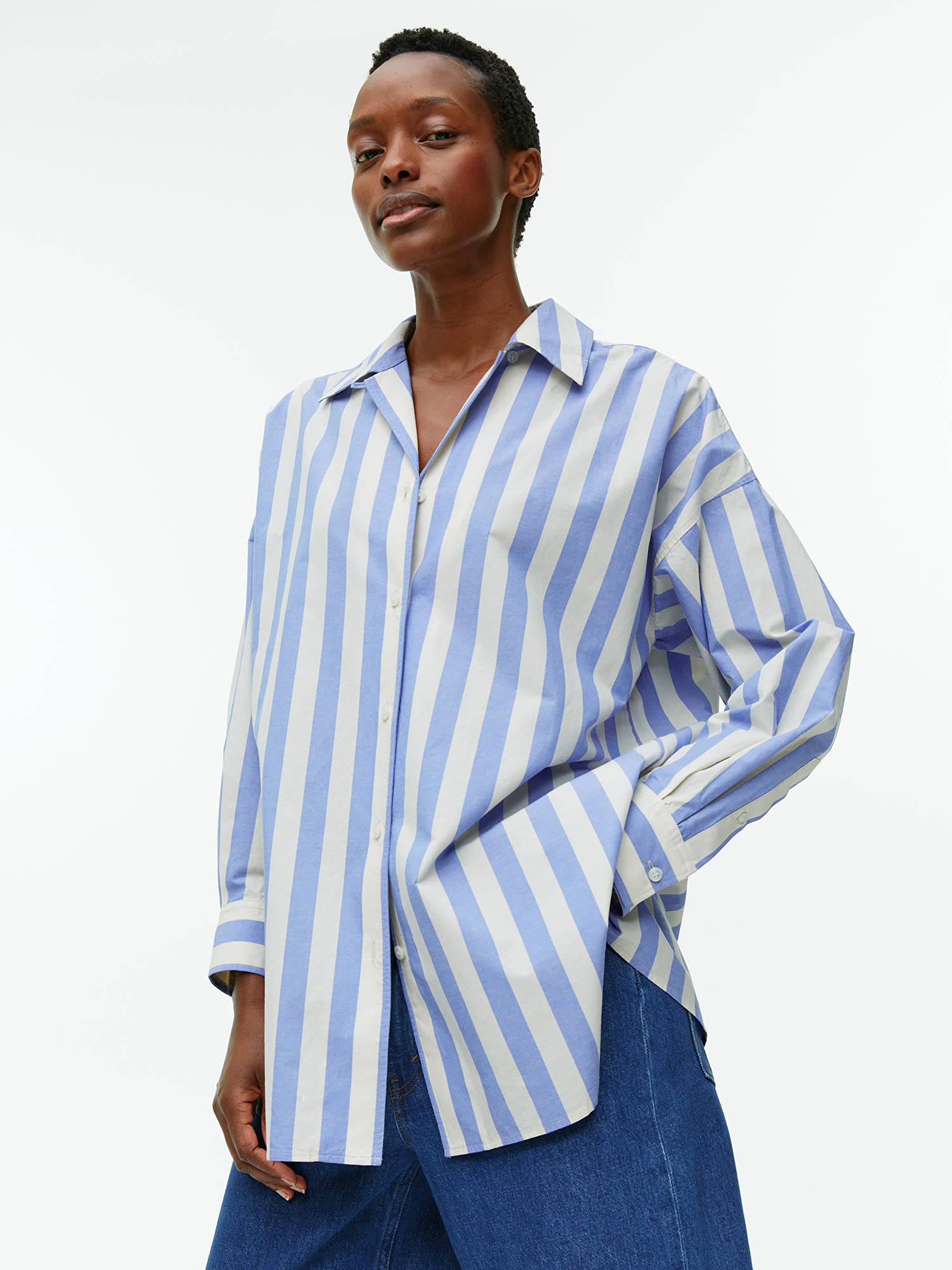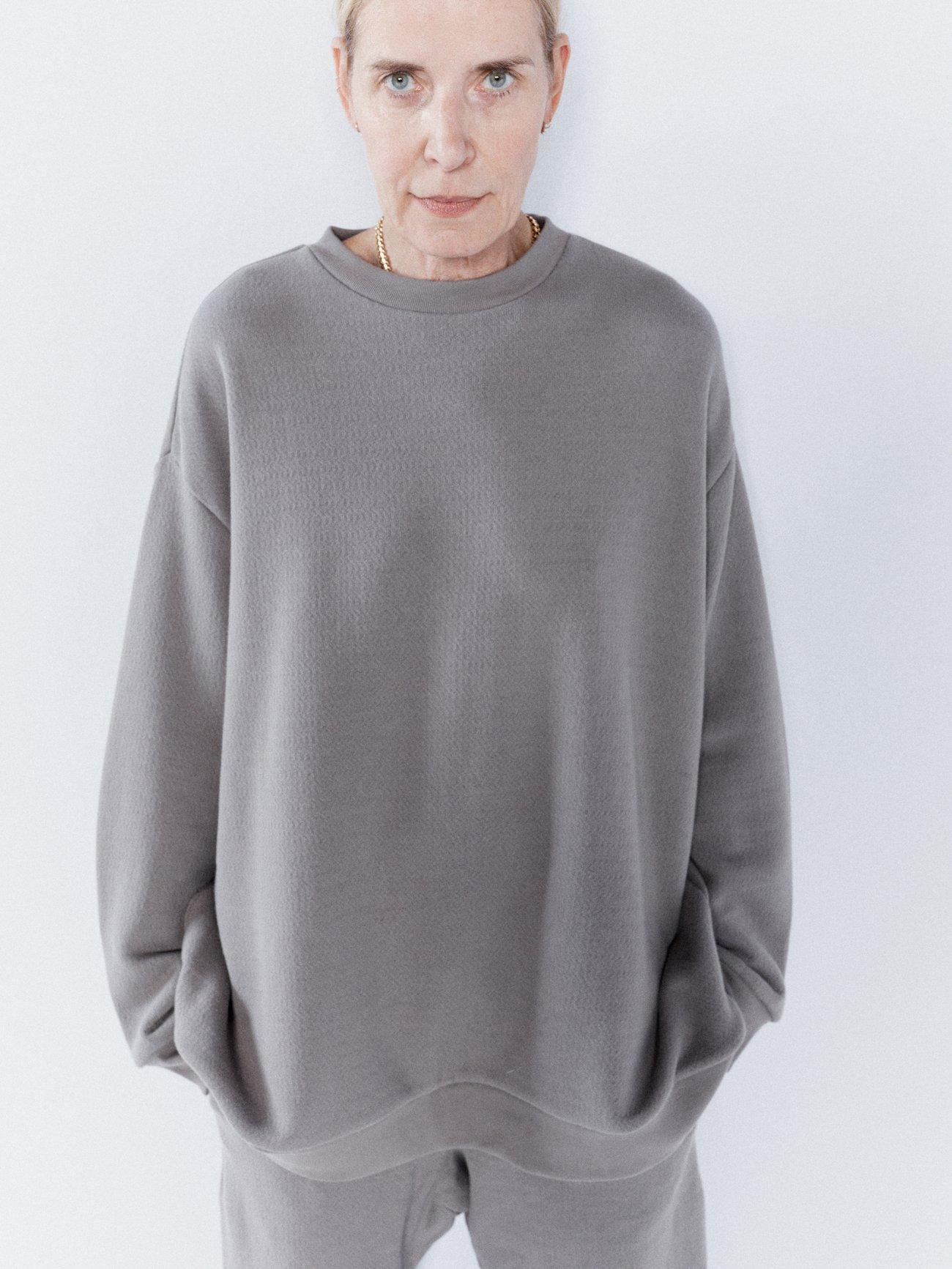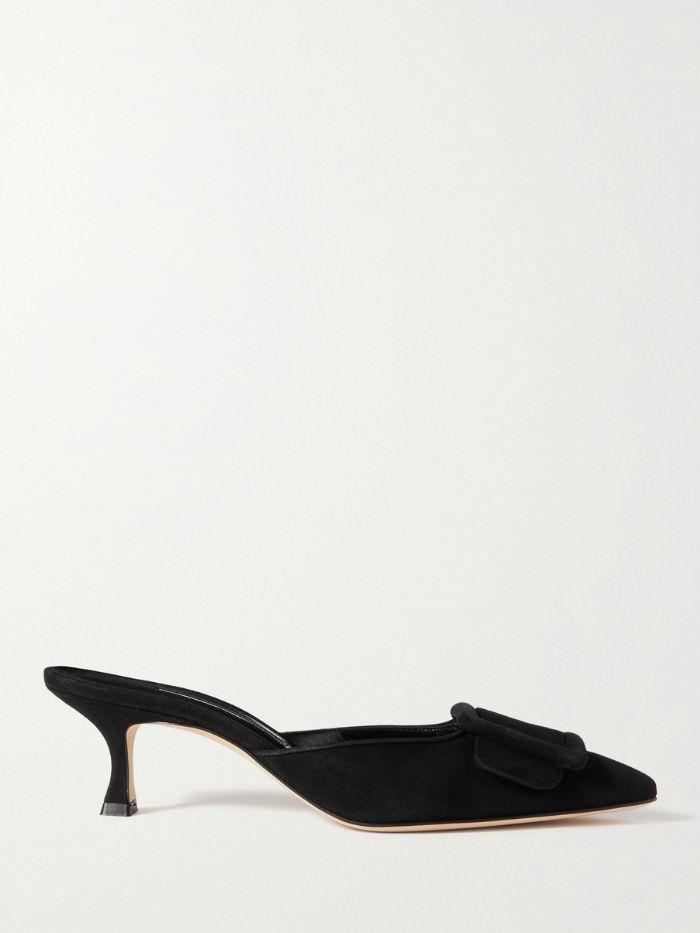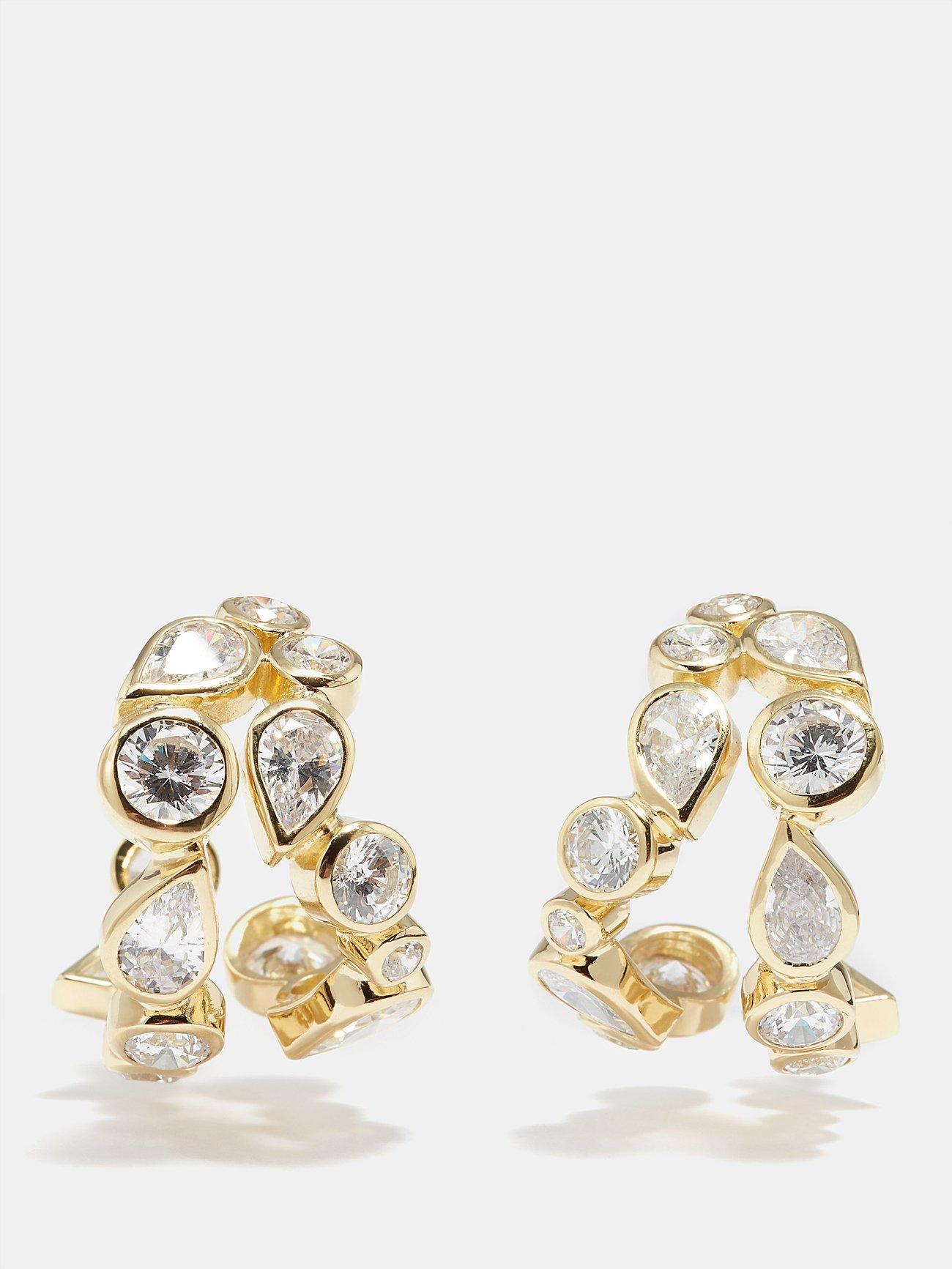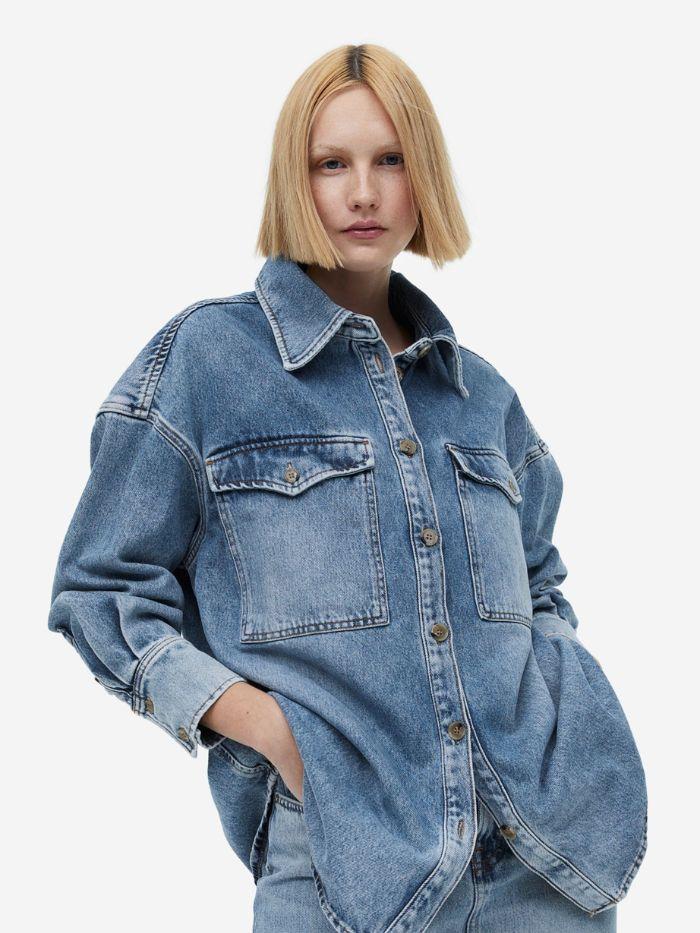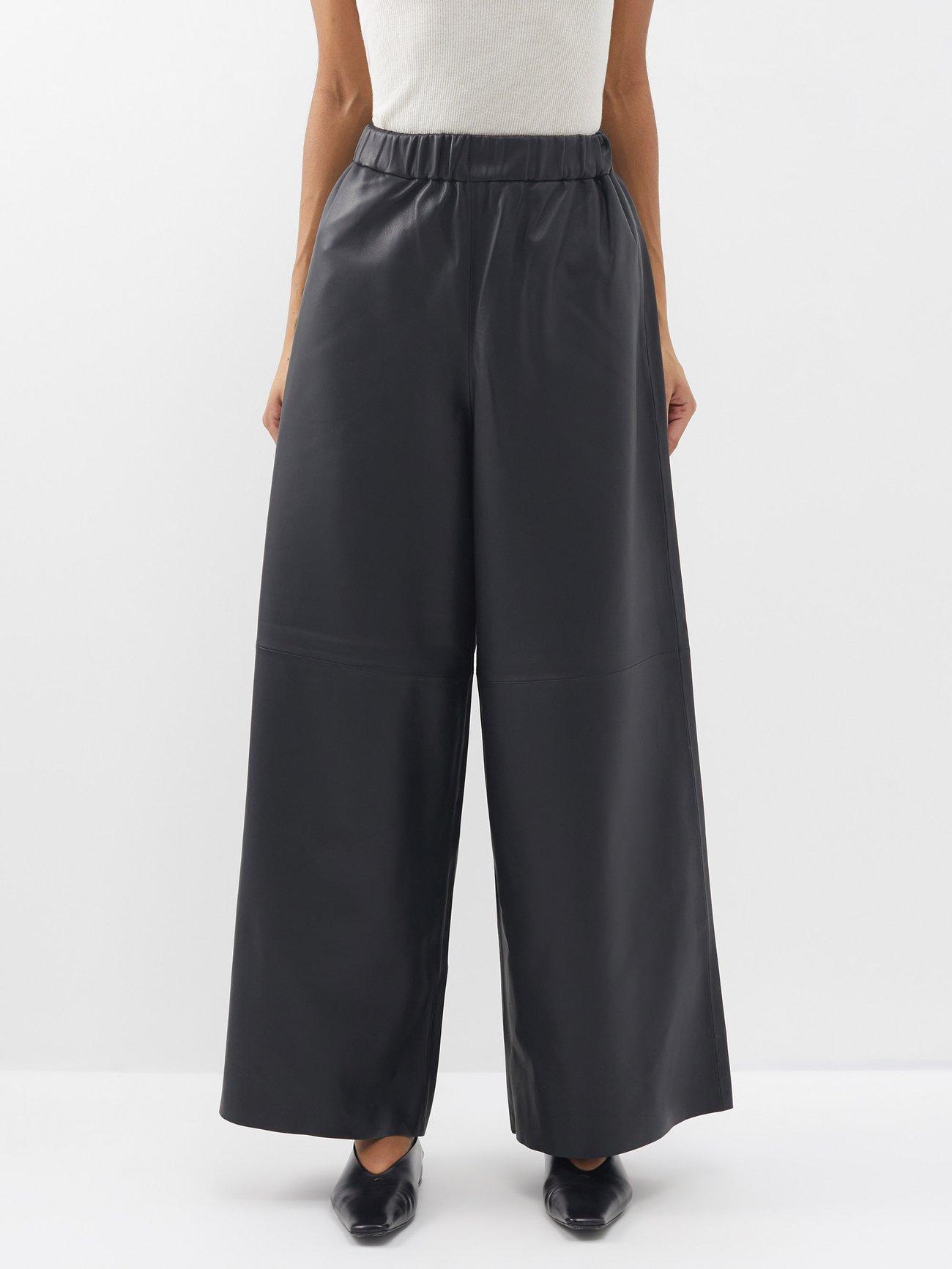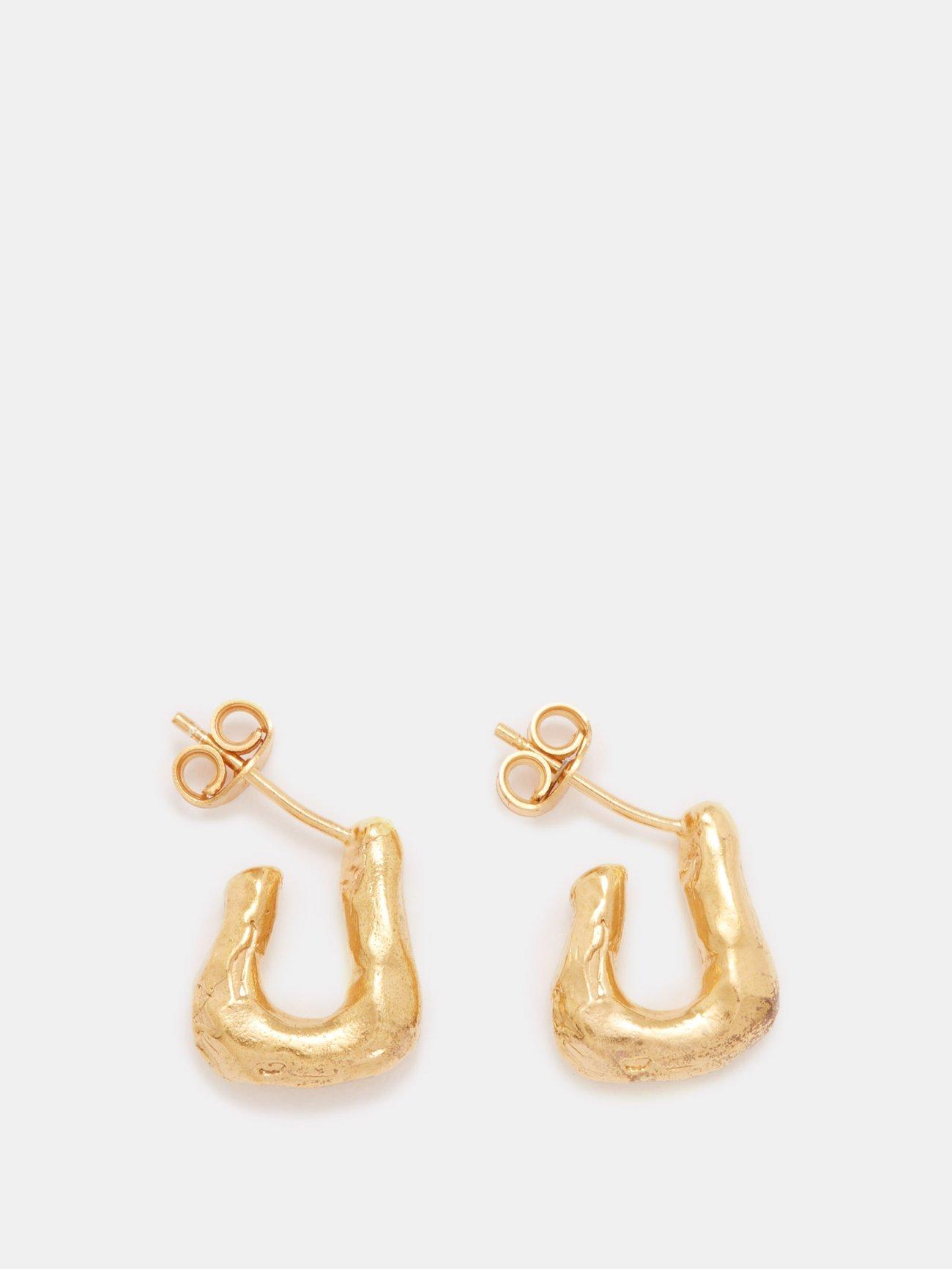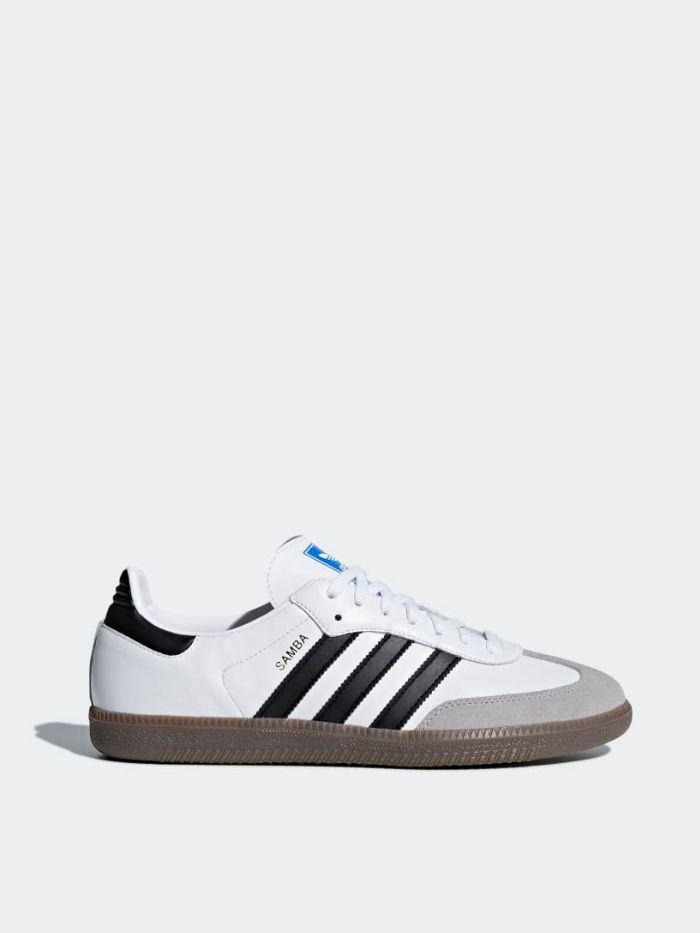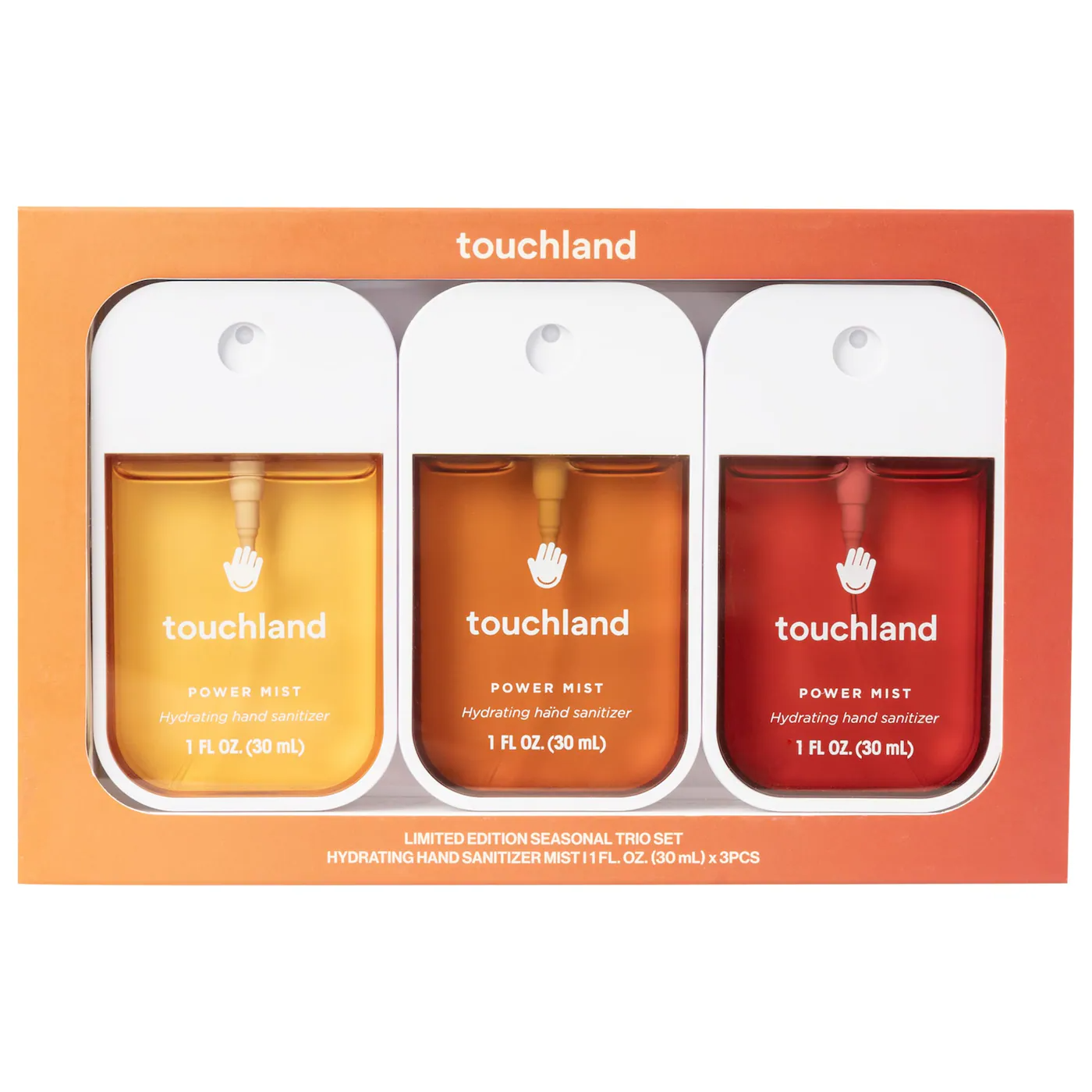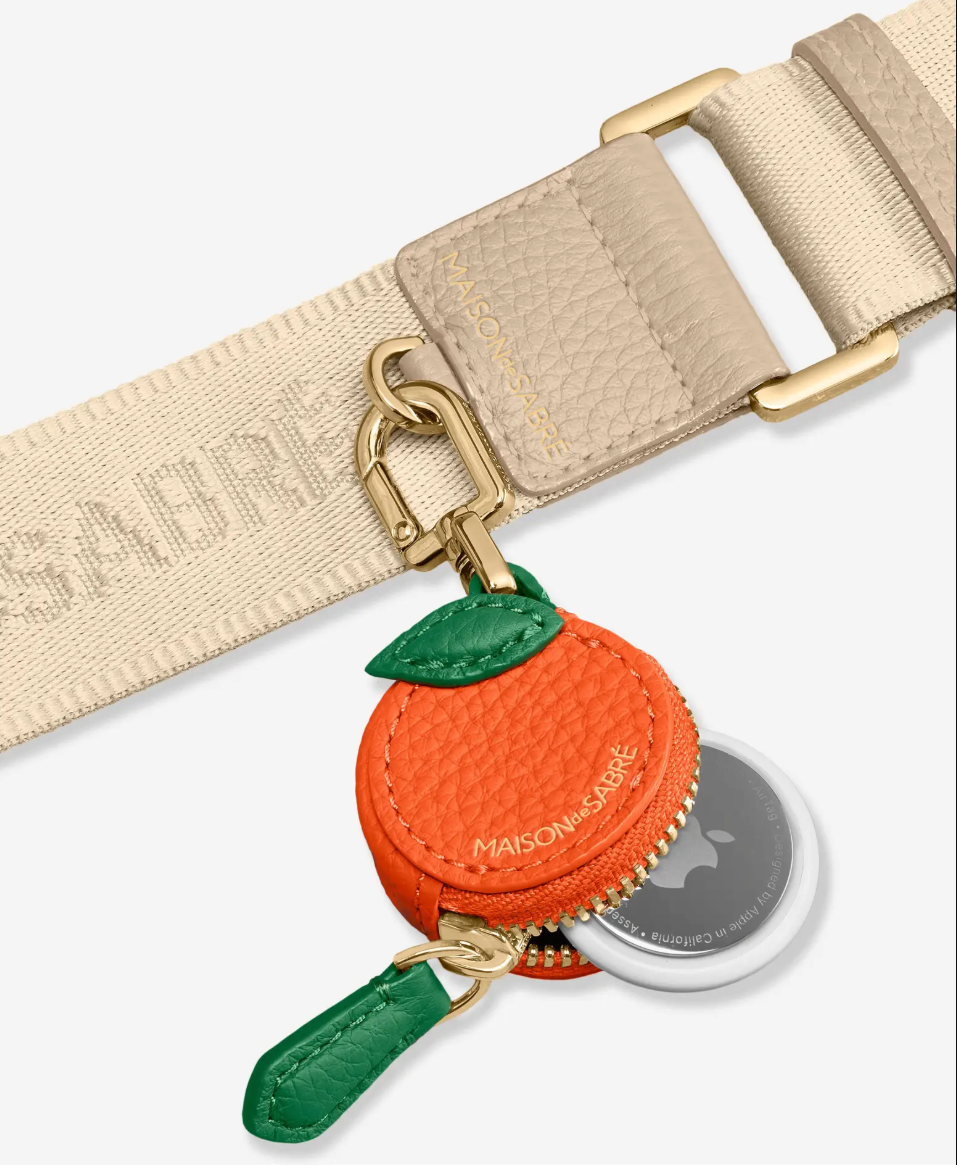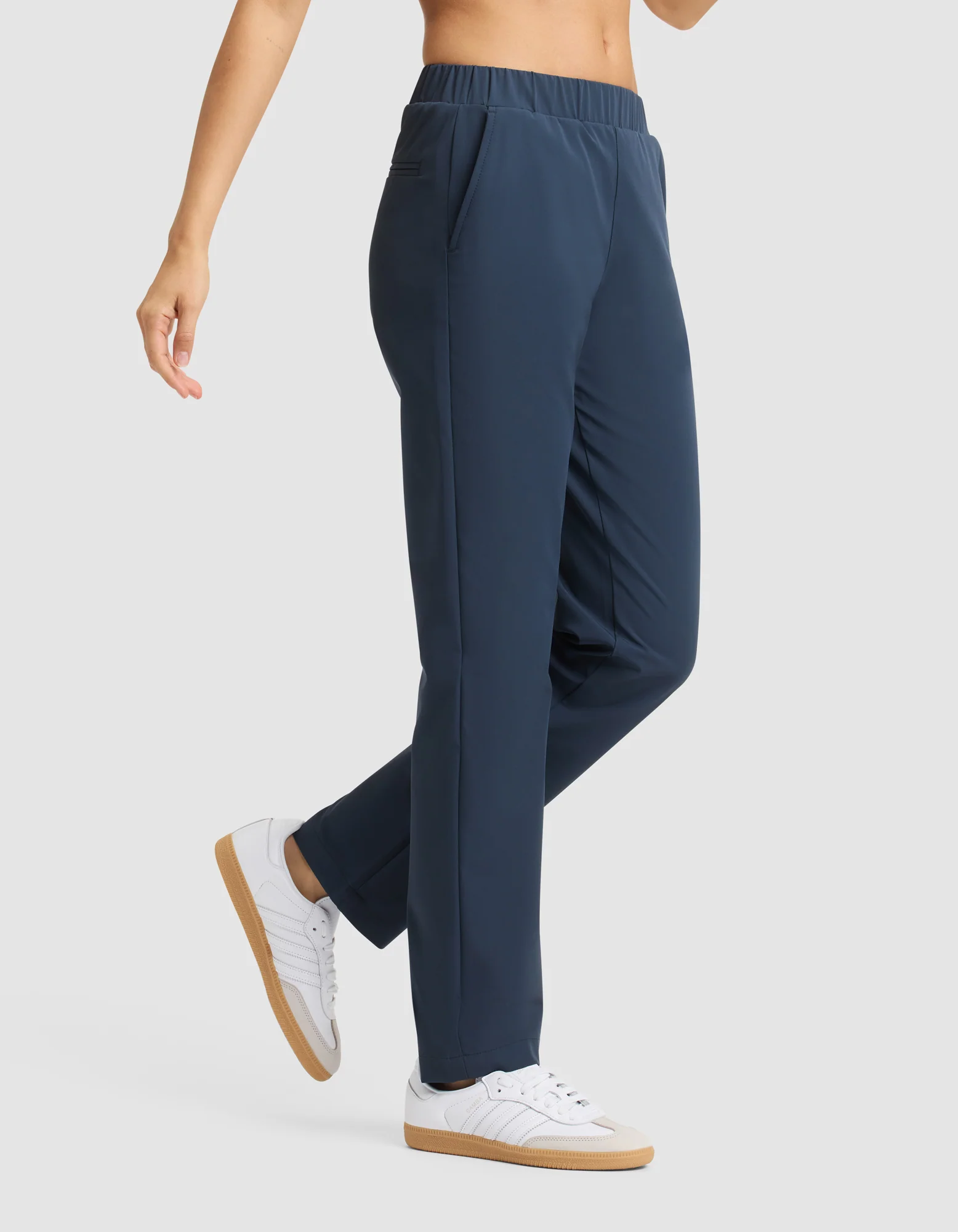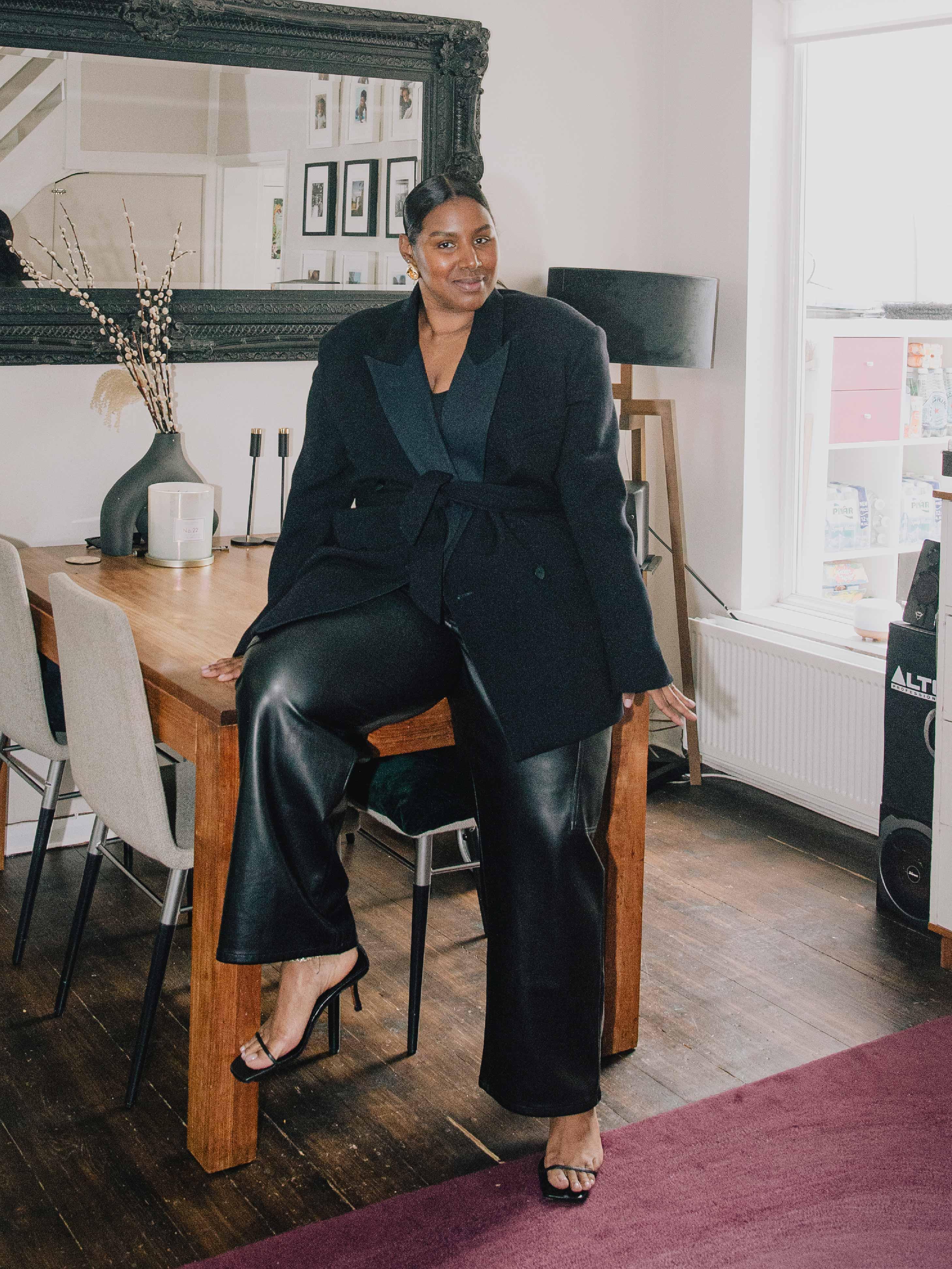
If looking through the wardrobe of Davina Wedderburn, head of brand and communications at the British Fashion Council, tells us anything, it’s that she is one of the few people who has truly mastered the art of the capsule wardrobe. As expected, she has plenty of tailoring, all of the well-cut essentials and a neutral colour palette, but Wedderburn uses this refined edit as the foundation for some exceptional accessorising that helps to bring each look to life.
It makes sense that Wedderburn’s closet provides a kind of uniform for each of the different roles she plays—she juggles the school run alongside her 9-to-5, playing important roles in both the BFC and her local mums’ WhatsApp group. She is considered in the industry as one of those rare figures who manage to be well-known and highly respected yet infinitely friendly and warm, but just don’t expect her to be front and centre. “I hate having my photo taken,” she warns. As Wedderburn is someone who dedicates her life to those around her, it’s easy to understand why she might feel an aversion to having the spotlight focused on her.
She welcomes us into her East London home, and alongside the pictures of her sons and her wedding day (the photographs she loves the most) are stacks of books and plenty of magazines, and we start the shoot with a garage soundtrack that still manages to make sense at 10 a.m. She might not be used to being in front of the camera, but as a certified “garage girl,” she’s immediately at home with a nostalgic soundtrack.
Allowing us to rifle through her wardrobe uncovers a lot about Wedderburn’s life, loves and approach to dressing, so be prepared to take notes. Keep scrolling to see how a busy PR professional creates the ideal workwear wardrobe with Manolo Blahnik, Maison Margiela and a healthy dose of Arket.
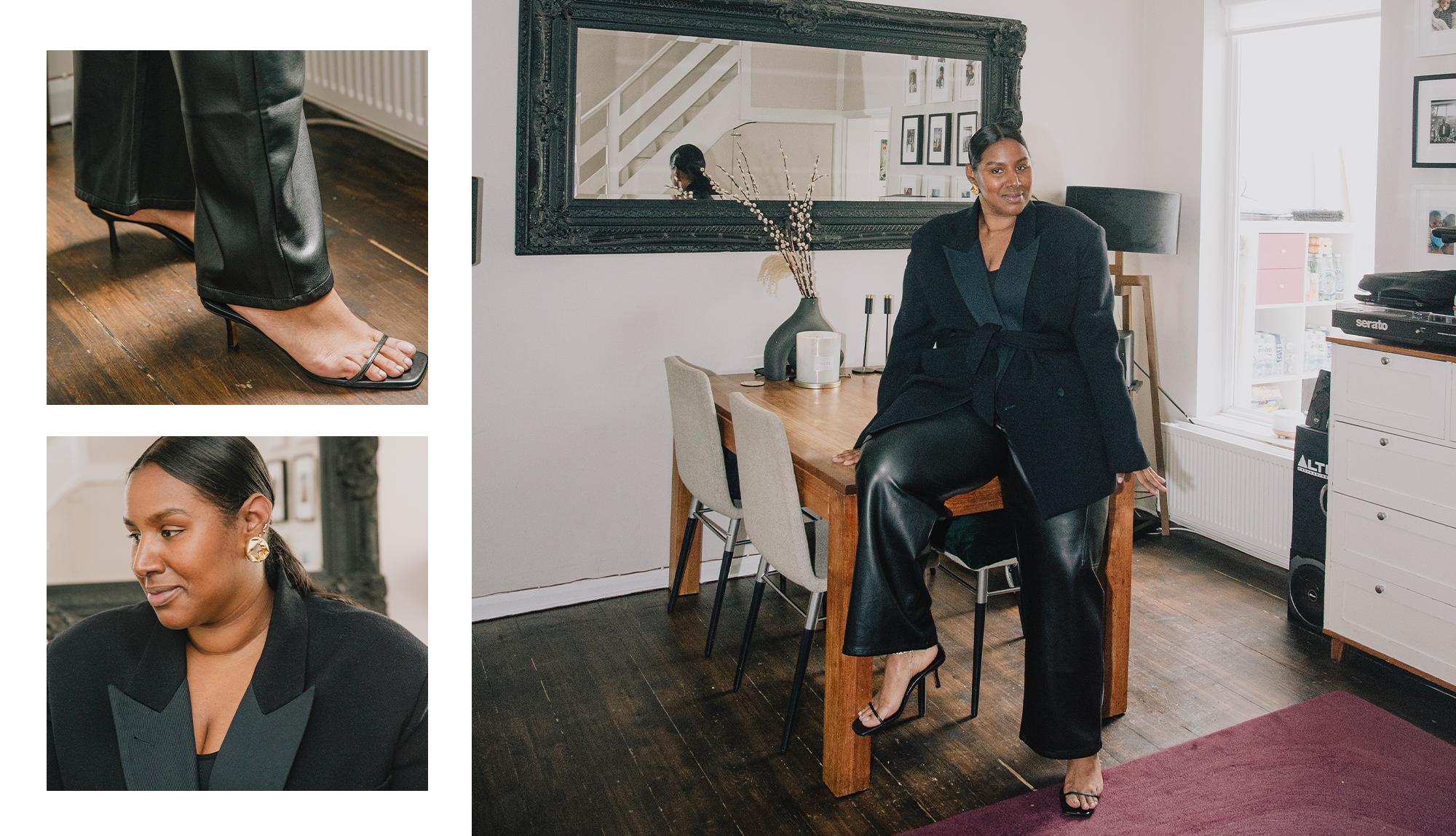
For those who don’t know your journey, could you tell us a little bit about how your career in fashion started?
I feel like I’ve always had a love for fashion, even if I wasn’t conscious of it at first. Both my mum and dad are extremely well put-together and were super stylish in their heyday, and I guess it rubbed off me and deepened when I discovered fashion magazines in my early teens. I was obsessed with magazines. I started to notice my style was a little different (I suppose now we would say “fashion-forward”) to most of my peers as a teenager. I opted for a bow over a tie for my first day of secondary school, and I’d rock a black roll-neck poncho from Morgan (if you know, you know) on non-school uniform days.
But why fashion? It’s always been an interest. I studied media and advertising at university, which included a PR module that, funnily enough, I really didn’t enjoy. But all my work experiences up to that point had been within fashion and fashion PR. While I was studying at university, I worked in Topshop Oxford Circus, so I was at the heart of one of the most popular shopping destinations in the country. It was right around the time when they were changing the game from launching Topshop Boutique and the denim studio to hosting shows during London Fashion Week. Just before I graduated, I was more than done with retail. I remember getting off the bus, looking at Topshop and then jumping back on the bus to go home whilst calling in sick. It was that day I emailed Modus Publicity (now ModusBPCM) about an internship, and I guess the rest is history. (thank you, Mr. Marsh!) I interned for two weeks before being offered a full-time role. I worked my way up the ranks and left after an amazing eight years to join the wonderful Karla Otto London team. Now, I am about to complete my first year at the British Fashion Council as the head of brand and communications.
You’re a born-and-bred Londoner. How has growing up in the capital influenced your style?
Hmm, I’m not sure. I feel like there is a north/south divide. I guess Londoners are a little more understated, but this even differs depending on where in London you live. It also has a lot to do with the time in which you grew up and what music scene you were into. I remember watching my cousin Tasha get ready to go to a garage rave back in the day after a visit to Proibito on Oxford Street or Bond Street wearing Moschino and Iceberg, and even back then for me, there was casual sophistication about the way people on the garage scene dressed. It can feel quiet and in your face all at the same time.
I’m a garage girl for life, and I think we have a way of making the most basic of outfits—jeans, trainers, tees and hoodies—look and feel super put-together. I don’t know. There’s just a vibe and swag that hits differently.
As a North Londoner, I would say spending time in certain types of clubs that played that music definitely influenced my style. Finding your aesthetic takes longer than you may expect, but even when you think you’ve found it, other nuances work their way in. Do I think you would look at me and think “Londoner”? No, but even if you did, that isn’t necessarily a bad thing!
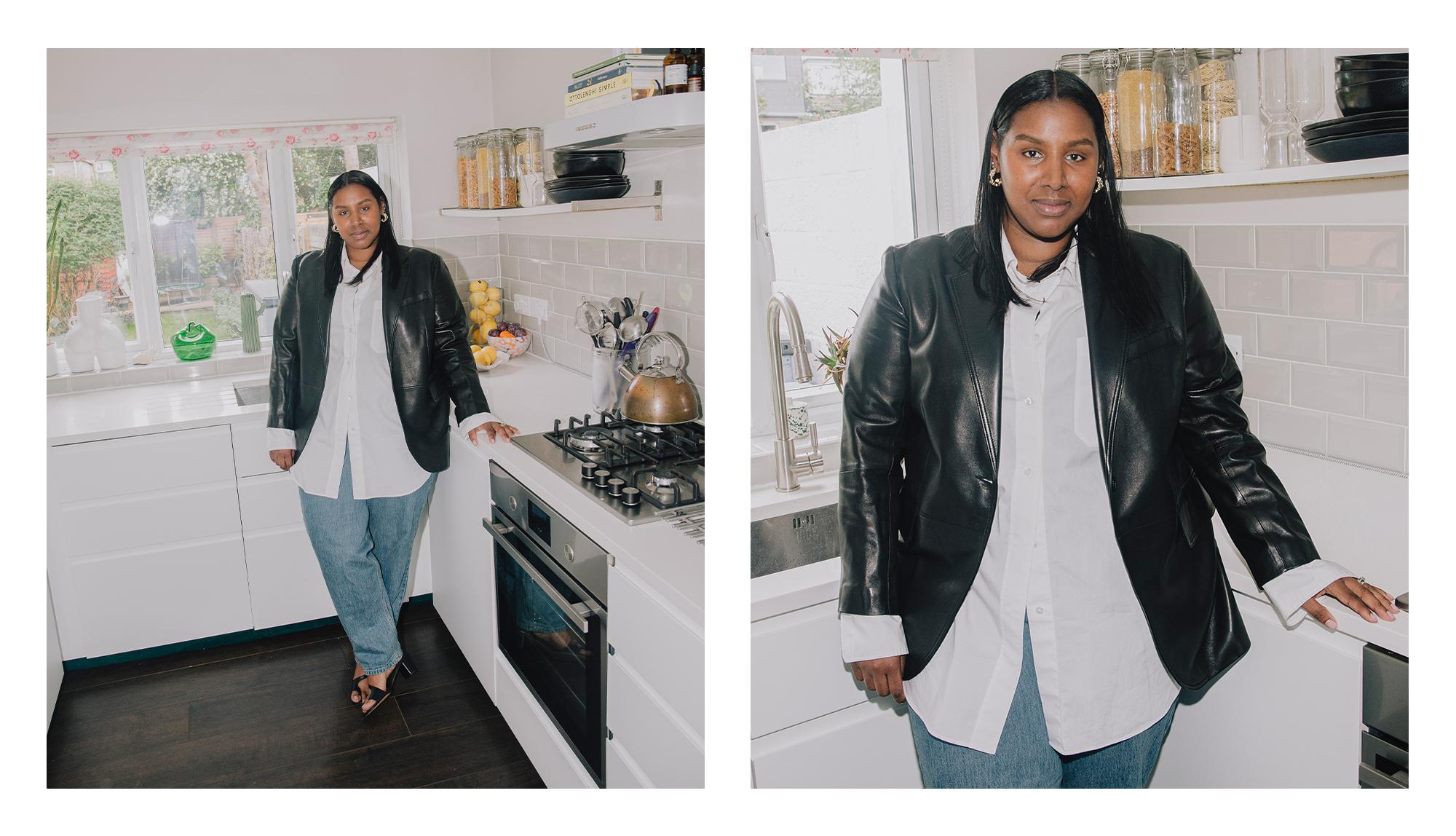
You’re head of brand and communications at the British Fashion Council. What does a typical day look like for you?
A typical day for me varies quite a lot. There are always lots of meetings and phone calls. London Fashion Week has just finished, where we piloted a new cultural program. For that, I curated two panel discussions which formed part of the schedule. One was about the future of menswear, and the other was co-curated with a great friend and talented film director called Aaron Christian who I used to work with in Topshop Oxford Circus. It was an incredibly inspiring, emotional and educational conversation about representation of the South Asian community within the creative industries. We also pulled together our first BFC pub quiz to celebrate the 30th anniversary of NewGen, which was so much fun. See, I told you it varies!
We are also making plans for the Fashion Awards, so there is lots of planning going on for that, and for me, that’s everything from branding, partners, awards, creative assets and voting. I’ll have meetings with talent agents, editors and comms agencies to plan the content we’re going to create around LFW later in the year, and I’ll be putting together event plans and guest lists for our annual programming. The list goes on.
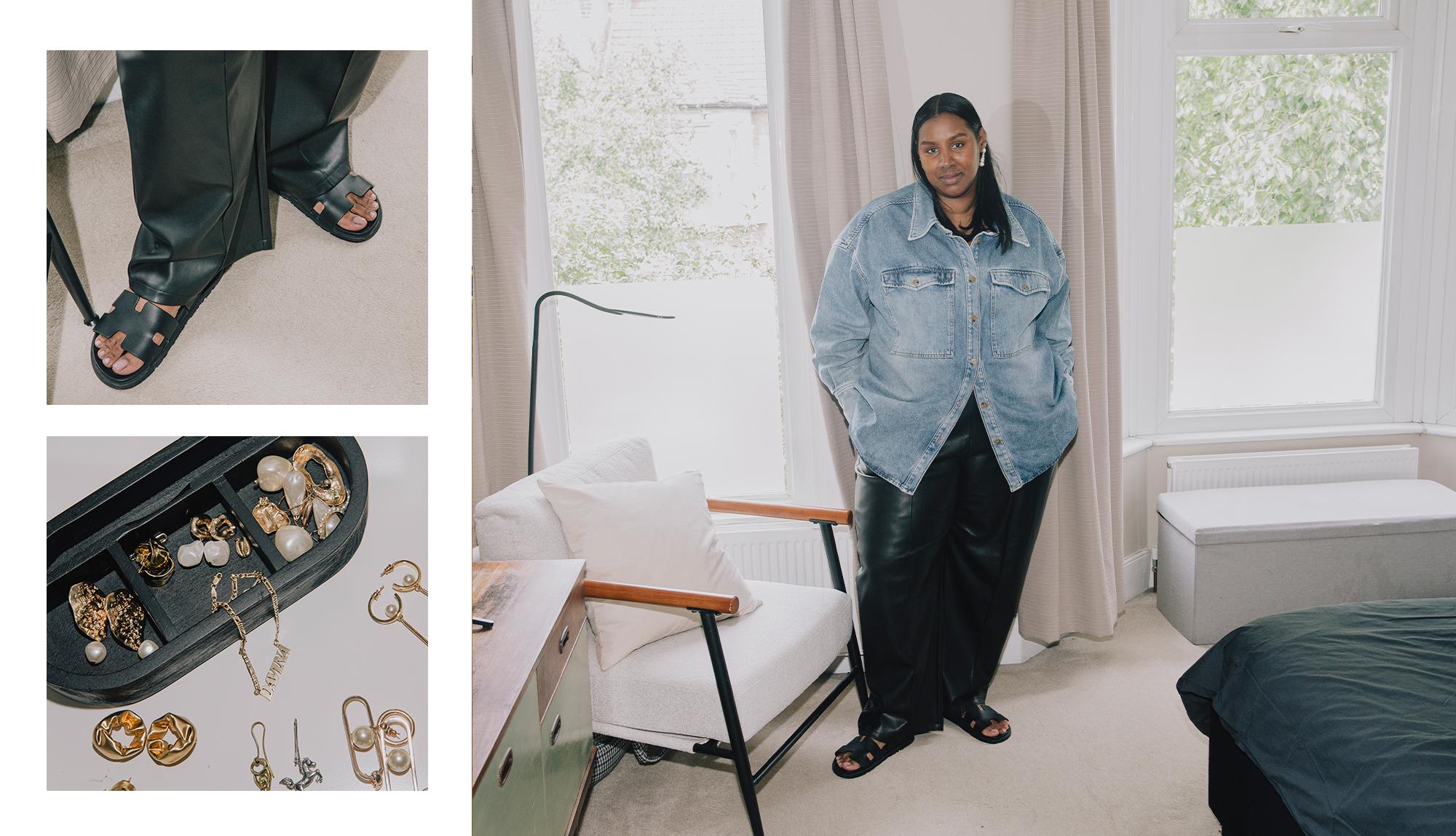
As a woman of colour working in fashion, have you found your experience in the industry to be encouraging or challenging?
Well, I’m a woman of color, and I’m a curvy gal, so there have been a few personal challenges for me. When I started working at an agency, it was challenging because I put so much pressure on myself. I like my work to talk for itself. I don’t think it should be about theperson. It should be about the work and how they deliver, so I think that’s probably been one of my biggest challenges. I am sure when you speak to most Black people they would say that having a great work ethic has always been drummed into them from their parents and elders.
Moving up the ranks quite quickly and seeing teams becoming more diverse meant that the pressure changed. When you are the most senior Black and curvy person in the business, there is a weight—no pun intended—on your shoulders, in that you believe you need to show up and represent everyone else that comes after you. This isn’t something I realised I carried until I went on maternity leave with baby number one, and someone in the team said to me, “Honestly, when I joined and saw a Black girl sat around the table as a senior director, I thought, ‘Oh my god, it is a big deal for me.'” Until someone said it out loud, I was completely oblivious to how important me being there not only as a Black woman but as a Black woman in a senior position meant to not only me but to others.
There is still a long way to go, and obviously, there’s always room to do better, but I have been lucky with the places that I’ve worked, and I’ve had some great teams and a workforce [that]has been reasonably diverse. Believe it or not, I’ve had quite a pleasant working experience in the industry. Do I look around and think, “God, I wish there were more of us”? Of course, but I also look back a feel proud. I feel proud that I have worked hard to get where I am today and can, hand on heart, say I have got to where I am through the merit of my work and nothing else and not family connects getting my foot in the door.
I’ve also been very lucky to work with incredible brands (both big and small) and on some amazing projects. I’ve had great teachings from clients and agencies, and I can’t look back and not be proud.
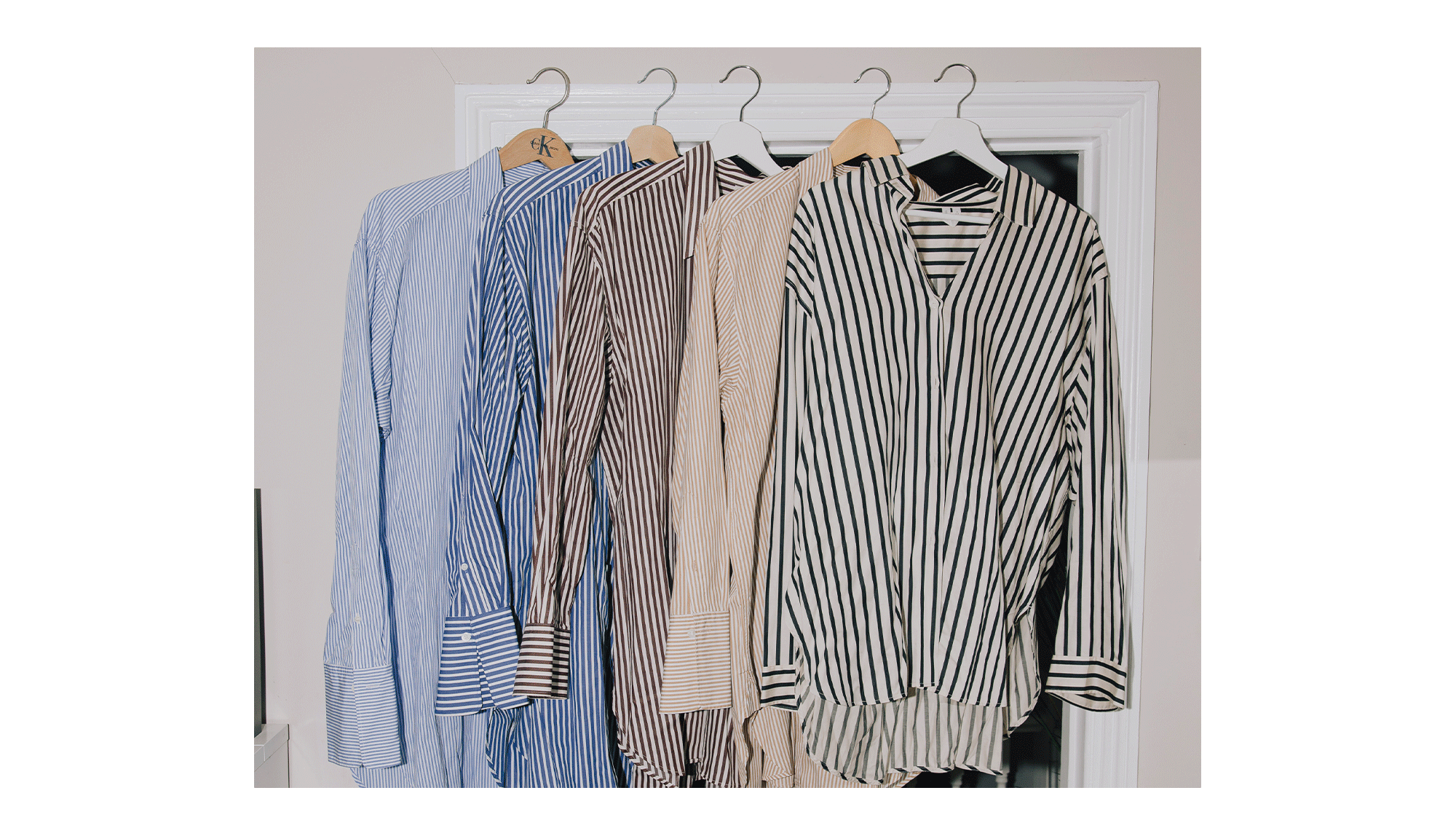
I read some quotes that you’d given on the connotations of the phrase “plus-size,” which is equally important when we discuss representation. Why do you think fashion is so slow to embrace a full size range?
One of the first things the industry needs to understand is what it truly means to be diverse and, on top of that, to be aware that size representation is averyimportant part of this conversation. For example, including one plus-sized model in your show or campaign but then not catering for the women and men they represent is not good enough. It is not “diverse.”
I also think it’s unacceptable for brands, especially bigger brands, not to offer a more inclusive size offering. And whilst I don’t have a problem with curve or plus-size collections, what I do have a problem with is when they are not representative of the main collections available for everyone who is a size 0 to 12 (maybe a 14 or 16 if you are lucky) to shop. Instead, there is a collection that talks to the perception and connotations of the term “plus-size,” which is shapeless. You automatically get a frumpy silhouette, three-quarter-length sleeves and oddly shaped trousers. And hey, I really like an oversized silhouette and a sack-like dress, but a sack dress with no shape? People need to understand just because you’re bigger does not mean that you’re not shapely. You have curves and parts of your body that you love and want to show just like anybody else, and therefore, you should be afforded the opportunity, or maybe I should say privilege, to shop the same as everyone else.
For me, business is about making money, and us curvy girls have dollars to spend just like our size 8, 10 and 12 counterparts. The average woman in the UK is a size 16, and if people with real bodies can’t buy and wear the clothes being sold, then what’s the point?
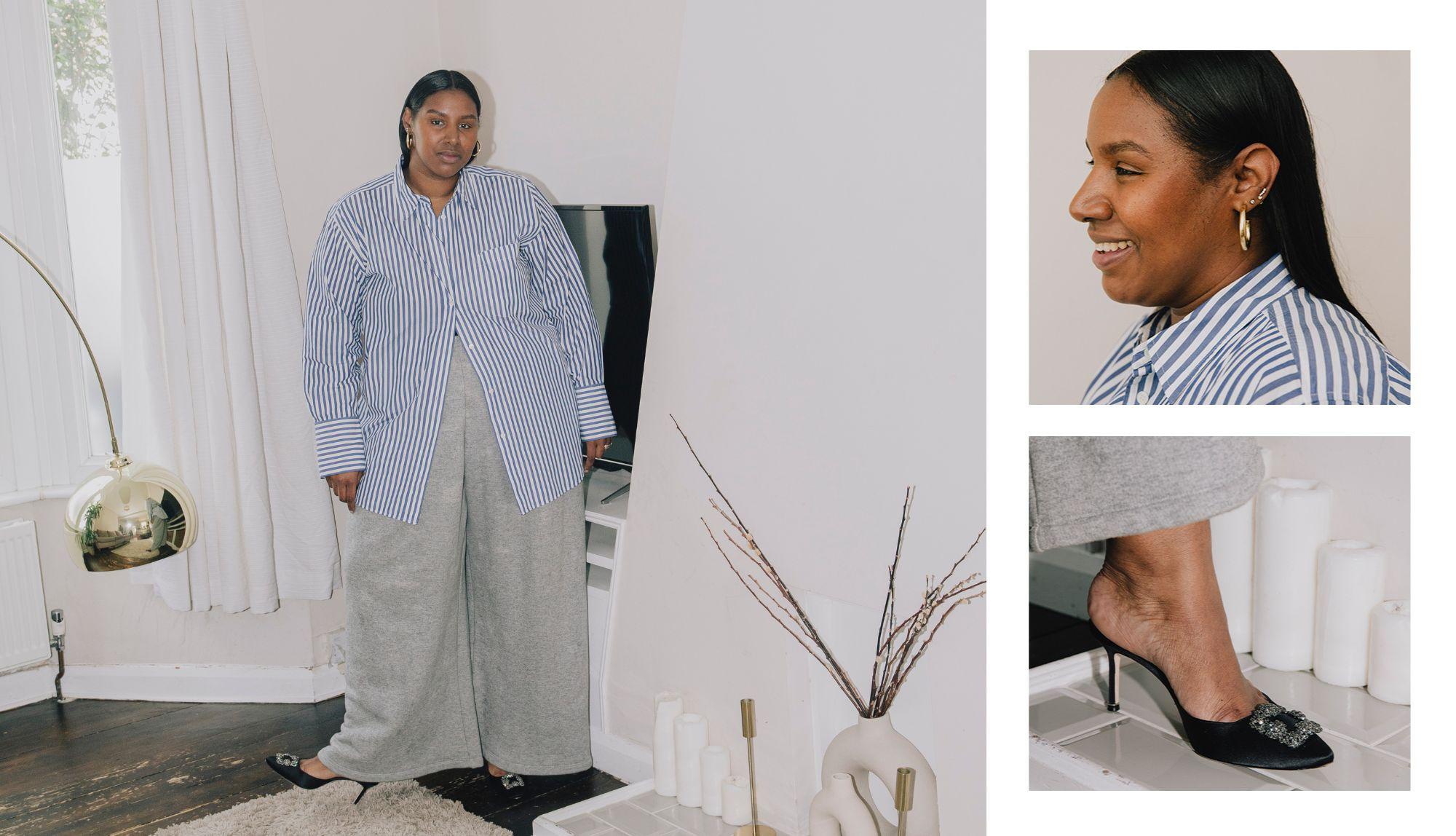
As a mentor, you have an important role in inspiring and encouraging the next generation of creative voices. How have you found that role, and why is it so important?
It’s super important. For me, it’s the difference between the doors already being opened versus getting there and having to fight to break the door down. It’s about helping the next generation find their voice, making them aware they deserve to be heard and supporting them to navigate this industry while showcasing the many varied routes you can take within it—it’s knowledge sharing, which is so important always!
I enjoy being a mentor. I enjoy teaching people new things and seeing them flourish. One of my favourite things is when I look back at some of the assistants I’ve had or people that I’ve managed and see them doing amazingly elsewhere, whether that be freelance work or changing careers [and]doing something completely different. It’s so encouraging and rewarding.
I’m part of Kenya Hunt’s R.O.O.M. Mentoring group and a local community organisation, Safe House Ldn (founded by my incredible friend Bisola Popoola), to give back. I don’t remember there being any mentoring schemes or community-based and -led creative spaces when I was growing up, especially when I reached an age when you start thinking seriously about your career. You didn’t have anyone other than your teachers and lecturers to turn to for advice back then, and they weren’t part of the industry I was interested in and trying to learn about. I think it’s important that people who are living and breathing the creative industries are teaching the next generation about what to expect. You want to put their best foot forward and to help them progress. Little titbits of information can help make someone’s life a lot easier.
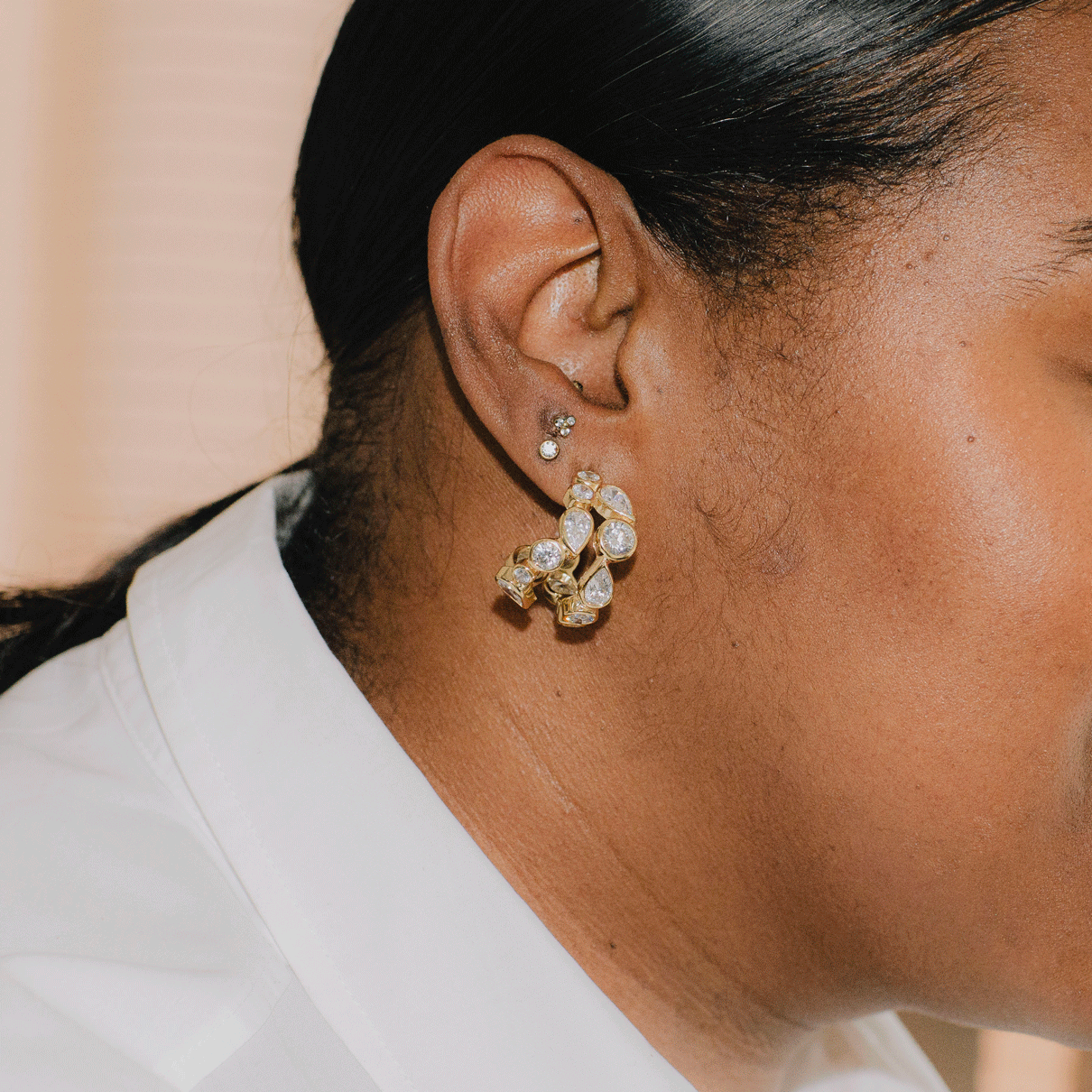
Which style icons have had the biggest impact on you?
I would say my mum and dad, and I love Tracee Ellis Ross. She can do no wrong in my eyes. Even her looks in Black-ish are *chef’s kiss*—perfection. Also Phoebe Philo. I still reference her shows for inspiration today.
If we looked through your wardrobe on any given day, what would we find?
Okay, this is quite easy! It’s mostly quite classic, a lot of timeless pieces and styles. I have lots of oversized shirts, some great statement coats, oversized blazers, simple dresses and always a great tracksuit.
If you could wear one of those outfits for the rest of your life, which would it be and why?
Eeek! This is so hard! Probably a great-quality tracksuit and trainers.
What is the most important item in your wardrobe?
Probably my wedding, engagement and push-present rings. They were all made by the amazing Vincent in Hatton Gardens and are very special to me. My wedding band is set with 16 grey diamonds representing the number of years Dean and I had been together when we got married. And both push presents have the boys’ names, birth date and time they were born engraved. The last of those has 19 diamonds representing the number of years we had been together at the time our second baby boy was born.
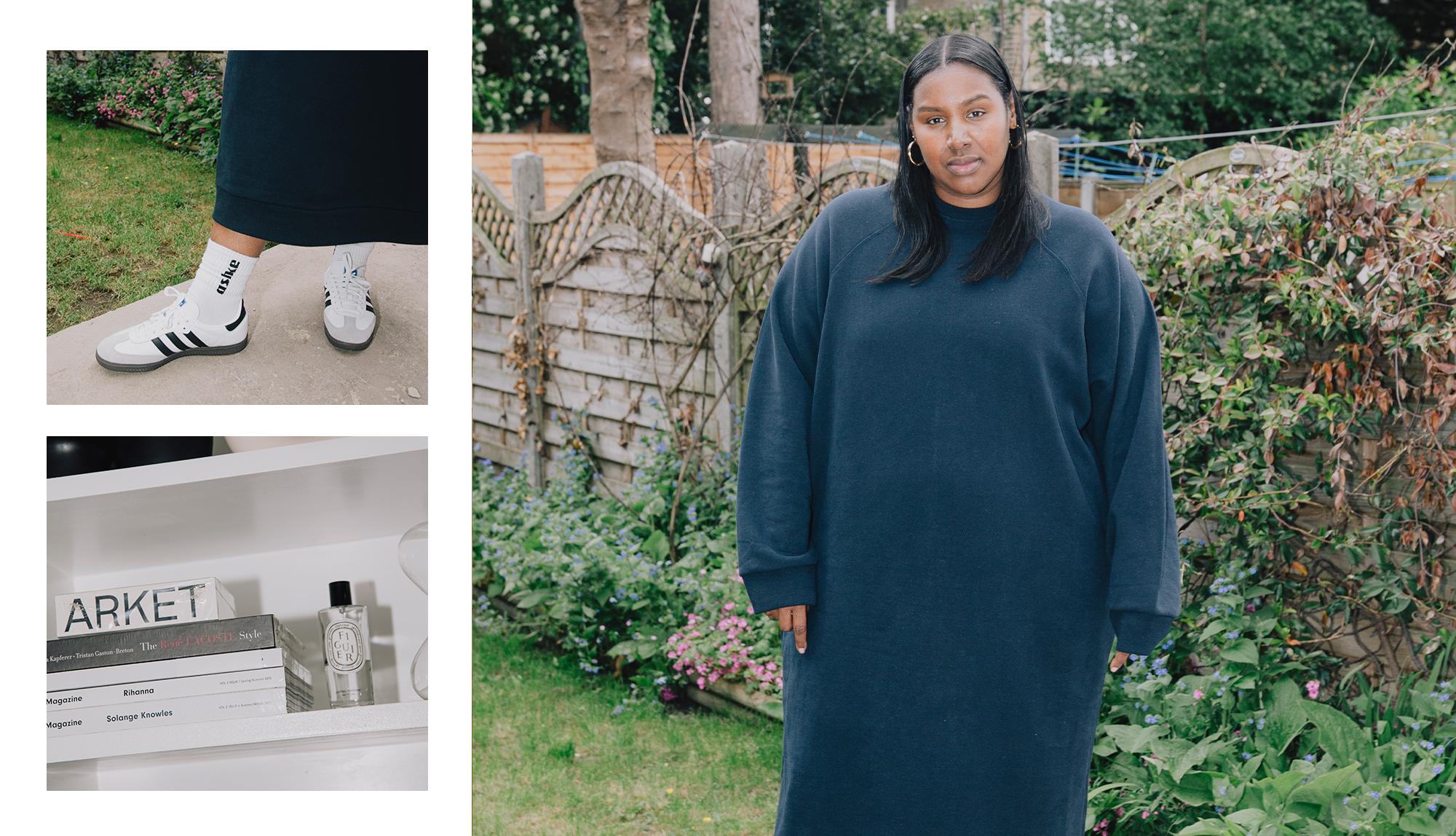
So what has been your most indulgent purchase?
Hmm, aside from my wedding dress, it’s between handbags and shoes. Probably my Hermès sandals!
What’s the best piece of life advice you’ve ever been given?
There’s so much. Protect your peace. Find your people, and ride and die for them. Know that it’s okay to say “no” sometimes. Know your worth. Push yourself and do things outside of your comfort zone. Learn to look for the positive in negative situations, whatever they may be. Understand that not all friendships are the same. Learn the purpose of each and every one and embrace them for what they are. Accept that you can’t help everyone and solve their problems, and that’s okay. It’s okay to do nothing sometimes. Time—embrace it and spend it wisely. It’s one of the only things you can’t get back.
What advice would you want to pass on to your sons?
Be curious, be kind, be honest. Remember that being a good communicator is just as much about listening as it is about talking. Be present.
What is next for Davina and your goals for the next year?
Doing more things outside of my comfort zone! Protecting my peace, spending time making memories with my family, and I would love to find time to start a little side hustle [or]passion project. You’ll have to wait to see what it is… To be honest, I’m still trying to figure it out. For now, finding a better work/life balance. Does it even exist?
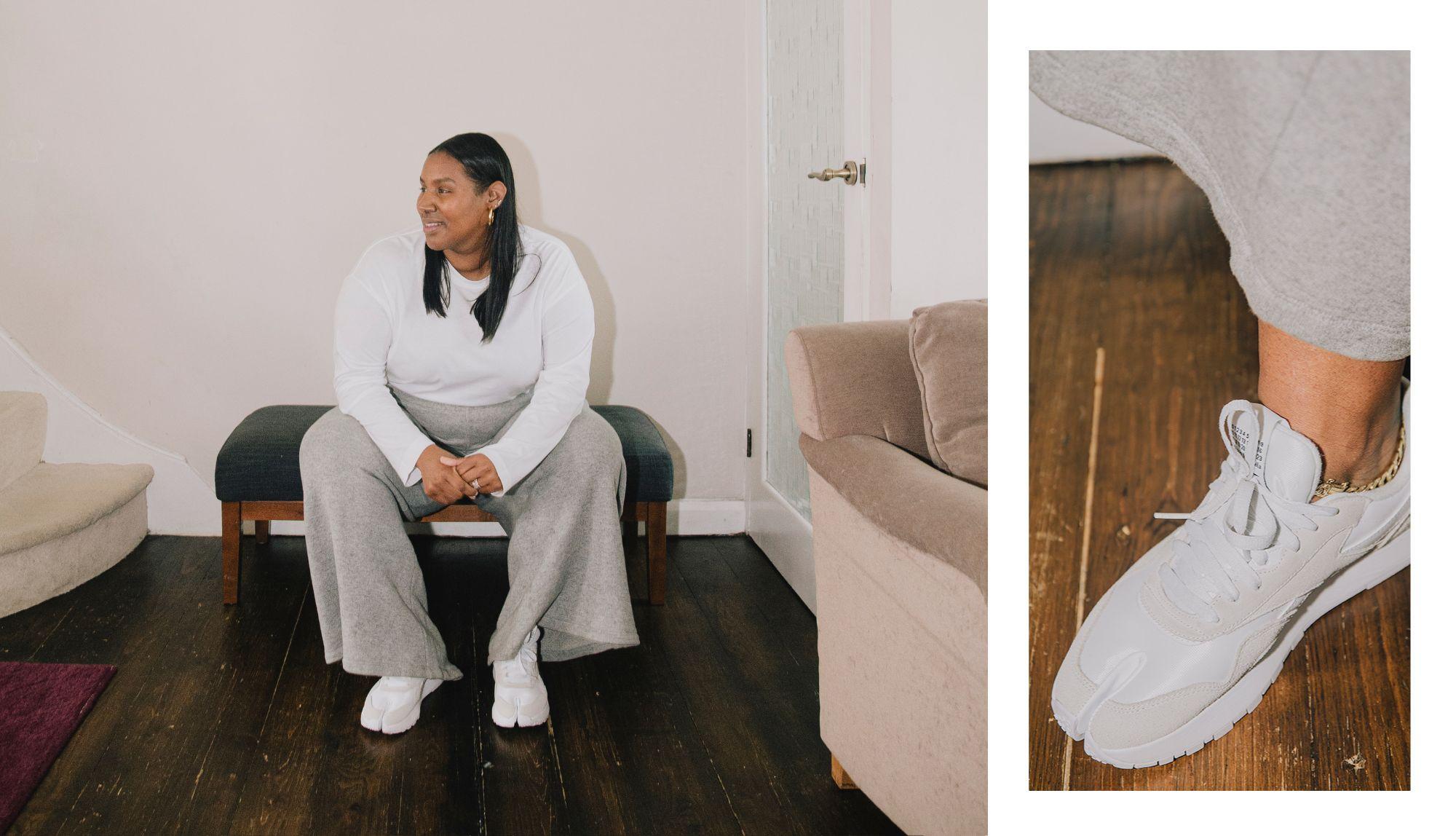
Thank you for having us, Davina!
Up Next, Our Summer Issue Has Arrived, Featuring India Amarteifio


